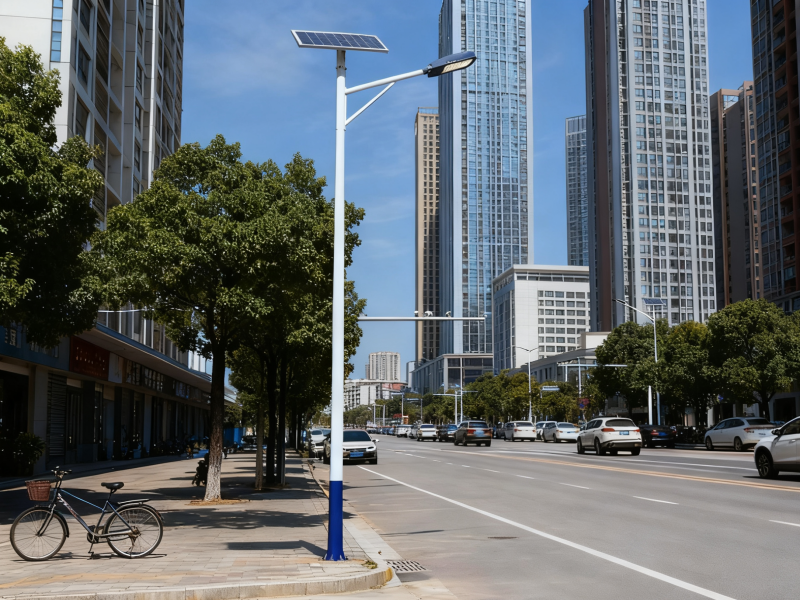Which is better, a solar street light or a conventional street light? Which is more cost-effective, a solar street light or a conventional 220V AC street light? Many buyers are confused by this question and don’t know how to choose. Below, Tianxiang, a road lighting equipment manufacturer, will carefully analyze the differences between the two to determine which street light is best suited for your needs.
Ⅰ. Working Principle
① The working principle of a solar street light is that solar panels collect sunlight. The effective sunlight period is from 10:00 AM to approximately 4:00 PM (in northern China during the summer). Solar energy is converted into electrical energy, which is then stored in prefabricated gel batteries via a controller. When the sun sets and the light voltage drops below 5V, the controller automatically activates the street light and begins lighting.
② The working principle of a 220V street light is that the main wires of the street lights are pre-wired in series, either above or below ground, and then connected to the street light wiring. The lighting schedule is then set using a timer, allowing the lights to turn on and off at specific times.
II. Scope of Application
Solar street lights are suitable for areas with limited electricity resources. Due to environmental and construction difficulties in some areas, solar street lights are a more suitable option. In some rural areas and along highway medians, overhead main lines are susceptible to exposure to direct sunlight, lightning, and other factors, which can damage the lamps or cause wires to break due to aging. Underground installations require high pipe jacking costs, making solar street lights the best option. Similarly, in areas with abundant electricity resources and convenient power lines, 220V street lights are a good choice.
III. Service Life
In terms of service life, road lighting equipment manufacturer Tianxiang believes that solar street lights generally have a longer lifespan than standard 220V AC street lights, given the same brand and quality. This is primarily due to the long-life design of their core components, such as solar panels (up to 25 years). Mains-operated street lights, on the other hand, have a shorter lifespan, limited by the type of lamp and maintenance frequency.
IV. Lighting Configuration
Whether it’s an AC 220V street light or a solar street light, LEDs are the mainstream light source now because of their energy-saving, environmentally friendly, and long lifespan. Rural street light poles at a height of 6-8 meters can be equipped with 20W-40W LED lights (equivalent to the brightness of a 60W-120W CFL).
V. Precautions
Precautions for Solar Street Lights
① Batteries must be replaced approximately every five years.
② Due to rainy weather, typical batteries will deplete after three consecutive rainy days and will no longer be able to provide nighttime illumination.
Precautions for 220V AC Street Lights
① The LED light source cannot adjust its current, resulting in full power throughout the entire lighting period. This also wastes energy in the latter part of the night when much less brightness is needed.
② Problems with the main lighting cable are difficult to repair (both underground and overhead). Short circuits require individual inspections. Minor repairs can be made by connecting cables, while more serious problems require replacing the entire cable.
③ As the lamp poles are made of steel, they have strong conductivity. If a power outage occurs on a rainy day, the 220V voltage will endanger life safety.
Post time: Oct-10-2025





